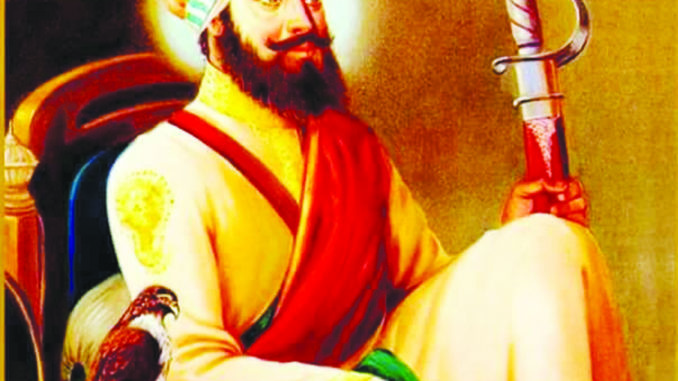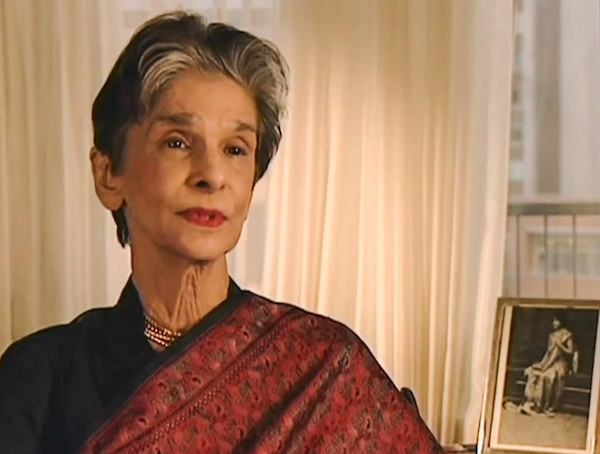
Guru Hargobind, the son of Guru Arjan Dev, was the sixth Guru of the Sikhs. The period of his pontificate (1606- 1645) is of great significance in the history of the development of Sikhism. He was born in 1595 at Wadali, a village in the district of Amritsar. His mother name was Ganga Devi.
Hargobind was a precocious child. He acquired a profound knowledge of Sanskrit, Prakrit and Punjabi literature. After Guru Arjan Dev’s execution in 1606, Hargobind acceded to Guru Gaddi. He was only 11 years of age at that time. He is well known for his policy of Miri and Piri whose features are discussed below :
Wearing of two swords (Miri and Piri)
In pursuance of his new policy, Guru Hargobind departed from the traditional practice of wearing of Saili and Topi. Now he put on two swords, one to represent his spiritual leadership and the other as a symbol of his temporal interests. The wearing of the two swords by the sixth Guru meant that he would play a double role in relation to his Sikhs-the role of a military leader as well as that of a spiritual guide. As a spiritual leader, the Guru was to impart religious instructions to his disciples for spiritual solace and enlightenment ; as a military leader he was to develop in them martial qualities. If necessary, as an effective safeguard to save the infant church under the changed circumstances.
Adoption of Emblems of Royalty
Guru Hargobind, unlike his predecessors, adopted the regal paraphernalia to dispel inferiority complex from amongst his followers. He set aside the Saili and Topi, the tokens of a simple Faqir. Like an oriental king, Guru Hargobind put on princely attire, with two swords, one on the left and the other on the right. He decorated himself with Chattar and a Kalghi. He also retained a well-armed retinue to serve as his bodyguards which added glamour to his kingly ways. Mohsin Fani writes that the Guru had three hundred troopers on horseback and sixty men with fire arms to serve as his bodyguards. The Guru was addressed as the Sachha Padshah . Thus in pursuance of the new policy, Gum Hargobind decorated himself with the paraphernalia of an oriental king, something unknown to his predecessors.
Construction of Akal Takhat
In pursuance of the new course, Guru Hargobind felt the need of a throne on which he should sit and guide his disciples in the political and military affairs. He did not like the idea of conducting the temporal affairs in the precincts of the Golden Temple, because he would impart only religious and spiritual instructions here. Consequently, he got constructed a new building known as Akal Takht in front of the Golden Temple at a distance of a few paces. The sixth Guru sat on a raised platform in the new building and conducted his military and political activities. The Akal Takhat also served as a court of justice for the Sikhs. Here the Guru sat like a king, administered justice to his followers. Here also he accepted offerings from his disciples and checked the accounts of his Masands.
Construction of Lohgarh Fort
Guru Hargobind also fortified his possessions. He realized the necessity of military defence of the city of Amritsar which had become the headquarters of the Sikh church. He got constructed a wall around the city. A mud fort was constructed in it which was named Lohgarh. He stored arms and other military equipments in the fort for use in times of emergency.
Organization of a Military System
To install martial spirit among his followers and to prepare them for action in the field, Guru Hargobind recruited even the highwaymen and dacoits who had renounced the life of loot and plunder. According to Mohsin Fani, the Guru had 800 horses in his stables, 800 troopers on horseback, and 600 men with fire arms. Actually the strength of his army would have been much larger. The very fact that the Guru was able to defeat the Mughals every time, furnishes evidence of his solid strength. The Guru had also a regiment of Pathans under the command of Paindakhan. The Guru had thus managed to raise a fighting force of considerable importance. Cunningham writes that this force served as Guru’s bodyguard and secured the safety of his person.
His military activity included construction of the fort of Lohgarh near Ramdaspur (Amritsar). All these measures were taken by the Guru to make the Sikh church safe and strong.
The sixth Guru also made arrangements for physical and military exercises for his followers. They spent every afternoon in the performance of physical feats such as wrestling, jumping and weight lifting etc., in the Akal Takhat which were meant to be strengthening and agility-giving exercises. They learnt the use of weapons of war by way of sword play, shooting of arrows and firing of muskets, in riding and using of lances and spears from horse backs. Often, the sixth Guru himself acted as instructor which raised the morale of the troopers and his other followers by taking them out on hunting expeditions, by arranging manly games and by holding symposiums of martial music. The Guru also established the custom of choirs moving round the Golden Temple in the night, with the blaze of trumpets and flare of torches, singing hymns in stirring tunes. All these measures put a new life into the drooping hearts of the Sikhs.
Guru Hargobind’s efforts for spiritual advancement of the Sikhs
Guru Hargobind was not a mere soldier. He was primarily a saint, a Guru, a spiritual inheritor of his predecessors. He would daily devote his time to guide his disciples on the spiritual path. He exhorted his followers that their real aim was to attain spiritual salvation and mental poise through the worship of the true Lord. He was a unique combination of Bhakti and Shakti. The sixth Guru was also a great missionary as well. After Guru Nanak Dev, Guru Hargobind is said to be the first Sikh Guru to go on long tours to preach the message of Nanak. He went as far as Nanakmata near Pilibhit (in Uttar Pradesh), Kashmir and Rajasthan. He sent Bhai Bidhi Chand to Bengal to preach his message. Bhai Gurdas was asked to make Kabul as his preaching centre. Almast, Phul, Gonda and Balu Hasna, who worked under Guru Hargobind, carried on the preaching work effectively. The Guru also got Sikh Gurdwaras and monuments repaired.





Be the first to comment